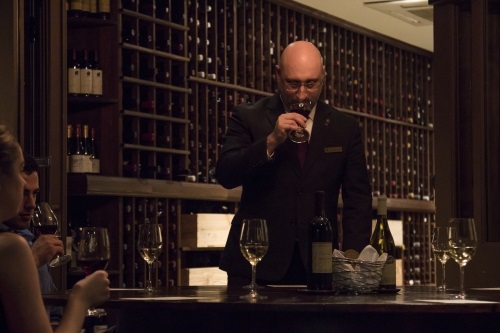
One of the most rewarding parts of being a professional sommelier is mastering the art of “blind tasting” or sensory evaluation. Have you ever seen someone swirl a glass of wine or stick their whole nose in a glass of vino and wonder what on Earth they’re doing? They are doing one of two things; trying very hard to look fancy or using their sense of smell to evaluate the characteristics of wine.
There is an extensive list of things to take into consideration when evaluating a wine, and every part of the wine is important to uncovering the grape variety, growing region and vintage.
First, color and appearance: the appearance of a wine gives hints of a wine’s varietal(s), age, alcohol and intensity.
Second, the nose or bouquet: the smell of a wine tells the story of the type of varietal used, the age, and the region the wine comes from.
Third, the taste (finally): the flavor of a wine gives hints of its age and origin and confirms what you’ve smelled, and, of course, allows you decide whether or not you like the wine. This is typically the last item of discussion when blind tasting.
Once you’ve cataloged all of the characteristics of the wine, you can now start to discern what the wine is, where it is from and the vintage. This part takes A LOT of practice and experience. Certain wines have classical markers, meaning once you have tasted them, they are hard to forget. Once you’ve mastered this part, you can really show off your skills and delight your friends and family (I do it all the time!).
These techniques are the tools used by professional Sommeliers and amateur wine drinkers alike to dig deeper into a wine, beyond just what meets the eye (or tongue). Join us July 18th for this month’s From Vine to Wine Weekend where you’ll learn these techniques and open up a whole new world of wine!
